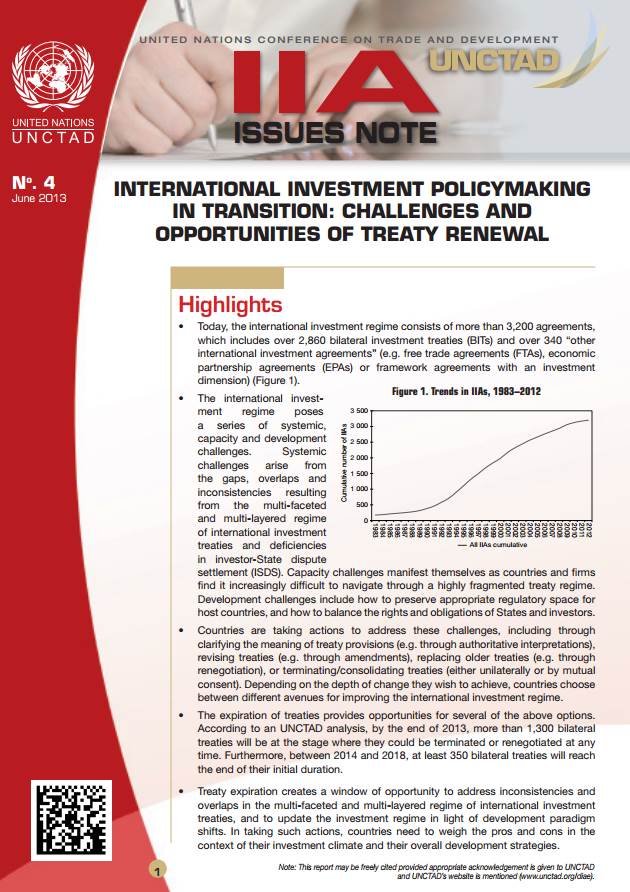IIA Issues Note: International Investment Policymaking in Transition
The international investment regime poses a series of systemic, capacity and development challenges. Systemic challenges arise from the gaps, overlaps and inconsistencies resulting from the multi-faceted and multi-layered regime of international investment treaties and deficiencies in investor-State dispute settlement (ISDS). Capacity challenges manifest themselves as countries and firms find it increasingly difficult to navigate through a highly fragmented treaty regime. Development challenges include how to preserve appropriate regulatory space for host countries, and how to balance the rights and obligations of States and investors.
The expiration of treaties provides opportunities for several of the above options. According to an UNCTAD analysis, by the end of 2013, more than 1,300 bilateral treaties will be at the stage where they could be terminated or renegotiated at any time. Furthermore, between 2014 and 2018, at least 350 bilateral treaties will reach the end of their initial duration.
Treaty expiration creates a window of opportunity to address inconsistencies and overlaps in the multi-faceted and multi-layered regime of international investment treaties, and to update the investment regime in light of development paradigm shifts. In taking such actions, countries need to weigh the pros and cons in the context of their investment climate and their overall development strategies.
















